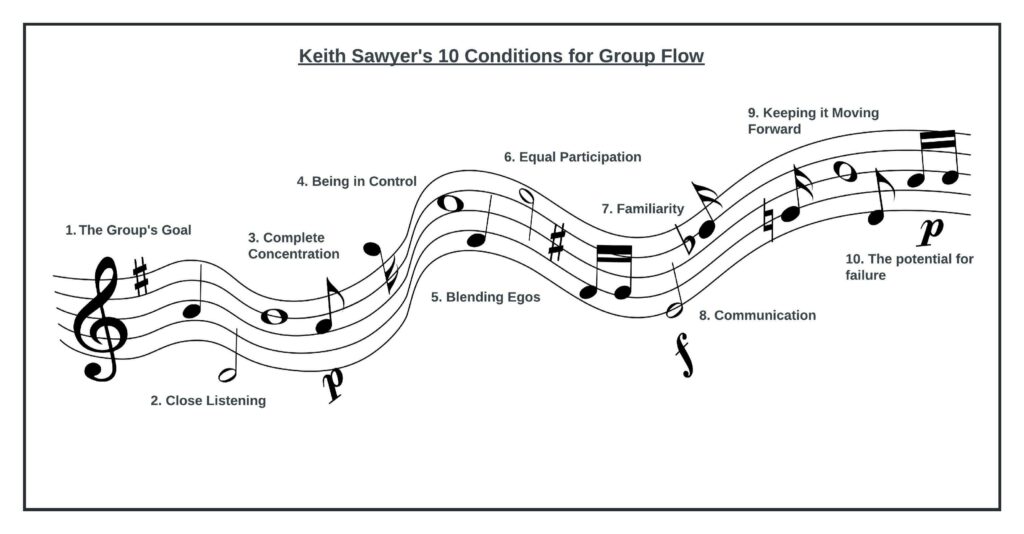There are some performances that deliver above and beyond. When the orchestra plays as one extension of an integrated instrument driven by a common heartbeat, it is a magical and memorable performance for the musicians. Discerning audience members are moved as well; without participating, they feel and appreciate the exceptional flow of the performance. This is team flow.
Previously we discussed Mihaly Csikszentmihaly’s work on individual flow (Flow: The Psychology of Optimal Experience). His work has been built upon by Keith Sawyer who has developed the concept of Group Flow as presented in his book Group Genius: The Creative Power of Collaboration.
Sawyer believes that group flow is more powerful than individual flow and it can lead to exceptional innovation. His premise is that collaboration is more important for innovation in today’s business world than individual innovation (http://keithsawyer.com/groupgenius/excerpt.php). It’s not easy to get the “collaborative web” right, but when you do, your company will be able to innovate and lead its industry.
Of the 10 conditions for group flow shown below, we pull out 5 that leaders can actively influence to improve their team’s chance to create group flow.

A. The group’s goal:
The goal needs to provide just enough focus so that team members can tell when they get closer to a solution— but one that’s open-ended enough for problem-finding creativity to emerge.
B. Complete Concentration:
The team needs an environment where they can focus on the goal. Creativity is often built upon many interactions and inputs over time so high-pressure deadlines do not help. Leaders who can provide this kind of buffer will help their teams.
C. Equal Participation:
Members should have comparable skill levels and participate equally. That means that when managers can participate in groups in flow, but they have to participate in the same way as everyone else engaging in close listening, granting autonomy and authority to the group’s emergent decision processes.
D. Communication:
Constant communication is required. This often happens in spontaneous conversations in the hallway or after work etc. vs. the boardroom. Make sure the Team has the leeway to discuss the project in informal settings.
E. The potential for failure:
There is no creativity without failure, and there is no group flow without the risk of failure. A culture that accepts and even rewards failures as learning experiences that move the organization ahead, will support Team flow.
If you have experienced group flow in sports, music, or the performing arts, or even better, in your work environment, you understand the powerful impact it has not only on performance, but on future team dynamics. Group flow may require significant effort, and it may not happen every day, but it’s positive impact will pay long-term dividends.

